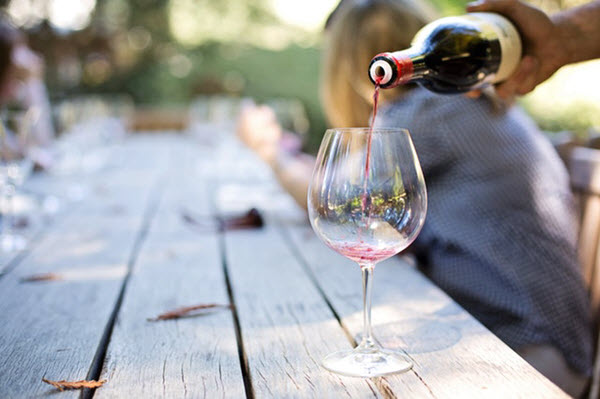Are You Ready For The New Rosé?
By Brian Wallace
May 4, 2018 • Fact checked by Dumb Little Man

Are you ready for the rosé revival?
Once associated with sticky sweetness, today’s rosé ranges from dry to sweet and everything in between. You can get it with bubbles, without bubbles, and from just about every major wine-producing region of the world.
Since summer is a prime rosé season, it’s time to brush up on your knowledge. Here's a quick rose wine guide to help you get the best wine experience.
Why Is Rosé Making A Comeback?
Once seen as the syrupy-sweet option for the unrefined palate, rosé is now popular among wine connoisseurs who want to enjoy the full spectrum of what this varietal has to offer.
Currently, rosé accounts for only 1.5% of wine produced. It’s rapidly growing in popularity, accounting for 1 out of every 36 bottles of wine sold in the United States.
Between 2016 and 2017, sales grew by 53%. This variety is now worth $207 million a year. What’s more, sparkling rosé is growing twice as fast as the rest of the sparkling wine category.
There are a few factors that have contributed to the recent rise in rosé’s popularity.
The Provence Wine Council began to promote rosé on promotional tours. Magazine articles started touting rosé as the next big drink and popular rappers and musicians started showing steady support.
Who Drinks Rosé?

Millennial women are the biggest slice of the rosé consumer pie, clocking in 40% of all sales. Men are showing intense love for this wine variety as well.
A quarter of all imported rosé is consumed in New York City while 15% is consumed in Miami. Almost a third of the wine consumed in France is rosé.
How And Where Is Rosé Made?
Rosé originated in Provence, France before the times of the Roman Empire around 125 B.C.E. With that, the city is the rosé capital of the world.
34% of the world’s rosé originates in France. Spain comes in second, making 19% of the world’s rosé and the United States comes in third, making 15%.
The process for making rosé is similar to how other varieties are made. The three most common ways to make it include:
- The Maceration Method – The skin of red grapes macerates in the juice before fermentation. The longer they stay in there, the darker the rosé will be. This is the most common method.
- The Saignée Method – About 10% of the juice is bled off after fermentation in order to make it darker. This is not as common.
- The Blending Method – This method is mostly used to make sparkling wines. A combination of red and white wines are mingled together in a vat to get just the right color.
What Are The Available Flavor Profiles?
There are more flavor profiles for rosé than you might imagine.
The classic traditional Provence style of rosé is dry, light in color, and tends to be more floral and herbal. Rosé made with pinot noir grapes is slightly darker, dry, and have earthy notes.
White Merlot and white zinfandel-based rosé wines are on the sweeter side and tend to have more fruity flavors. Tavel style is dry, dark, and strong and tastes and looks the most like red wine.
Are You Ready For Rosé?
More than half of American adults say that a nice rosé wine is more refreshing than a popsicle in the summer but you can enjoy it all throughout the year.
In fact, many people enjoy a nice glass of rosé when they are just sitting, reading or watching television. It also makes a great compliment to your food. It goes great with seafood and chicken dishes while sweet rosé is great with spicy foods.
Learn more about rosé from this infographic!
Brian Wallace
Brian Wallace is the Founder and President of NowSourcing, an industry leading infographic design agency based in Louisville, KY and Cincinnati, OH which works with companies that range from startups to Fortune 500s. Brian also runs #LinkedInLocal events nationwide, and hosts the Next Action Podcast. Brian has been named a Google Small Business Advisor for 2016-present and joined the SXSW Advisory Board in 2019.








